The story of the J Class yacht is dominated by tycoons, aviators and those who built empires of tea; it is a story of fervent transatlantic competition, in which vast sums of money were spent to both challenge and defend the coveted America’s Cup; and it is the story of some of the most beautiful yachts ever built, which provided some of the most closely-run racing of their day.
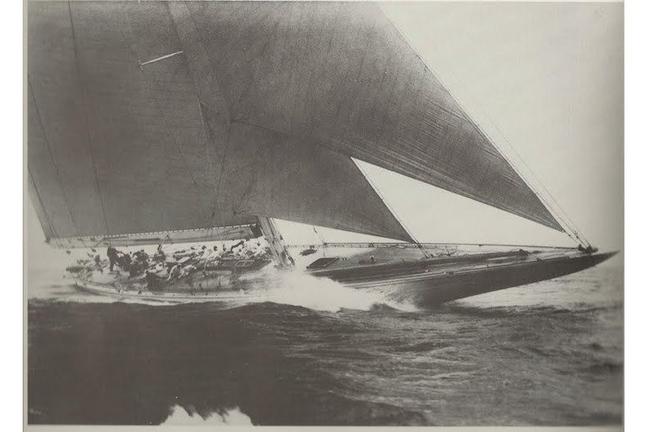
Harold Vanderbilt’s Ranger, launched in 1937. Image: Getty
The birth of the J Class
In 1929, Sir Thomas Lipton, the Scotsman who built an empire of grocery shops and tea, commissioned a new sailing yacht in a final effort to wrestle the America’s Cup from its host nation (the race had been won by the Americans every single year). His previous yacht, Shamrock IV, had come closer to winning the race than any other British contender, but had lost to Resolute, the defending yacht competing on behalf of the New York Yacht club. This would be Lipton’s fifth and final attempt to achieve a British win.
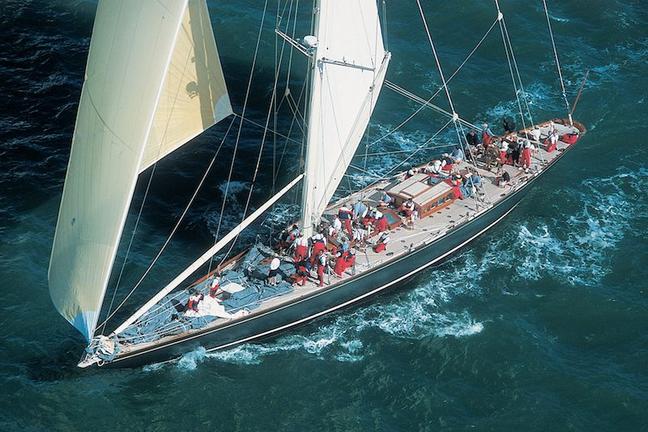
Lipton’s Shamrock V as she is today. Image: Pendennis.com
Designed by Charles Ernest Nicholson of Camper and Nicholsons, Shamrock V was the first of the J Class yachts. This new category of yacht would come about about as a result of the introduction of the so-called Universal Rule; introduced a year later in 1930, it provided a standardised formula for calculating which yachts could compete with one another. Prior to this, yachts had been growing larger and larger, with the differences between boats making some races unfair. The introduction of the new rules and the formation of the J Class, however, created a category of yacht racing famed for its closeness – one in which competitors sometimes crossed the finish line within seconds of one another. Yet for all this evening of the odds, Shamrock V did not bring a change of wind for the ageing Lipton. Having spent a reported $2,000,000 on his final race attempt – an enormous sum at the time – Lipton still lost to Harold Vanderbilt’s Enterprise. Having failed to claim the victory that he so desired, Lipton retired to his estate, where he died shortly afterwards.
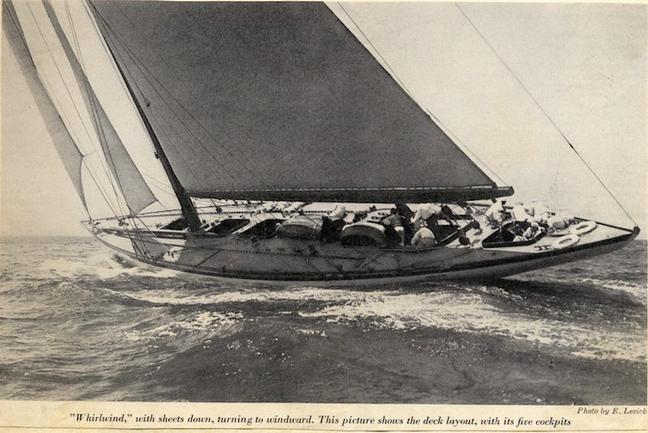
A newspaper cutting showing America’s Whirlwind in action. Image: yarrowthorne.blogspot.co.uk
America fights back
To understand the extent of the rivalry between the British and the Americans is to see the response to Lipton’s 1929 challenge. Pooling together enormous sums of money in a syndicate, the Americans built no fewer than four yachts for the 1930 race: Enterprise, Whirlwind, Yankee and Weetamoe, all of which were launched within a month of one another. Whirlwind was the most revolutionary of the four and, at 86 feet long, was built to within an foot of the limits set by the Universal Rule. Clearly, Shamrock V had caused more of an upset than Lipton could have known.

Aviator Thomas Sopwith, whose firm built the Sopwith Camel during WW1. Image: icollector.com
Of the British offerings, it is Endeavour, built in 1934 for aviation pioneer Thomas Sopwith, that is seen to be the worthiest of all the British challengers. Charles Nicholson’s third J Class design, Endeavour showcased innovative technology added by Sopwith himself, much of it influenced by his aviation expertise. Often said to be the most beautiful of all the J Class yachts, Endeavour was not, however, the fastest. Believed by some to have been hampered by her excessive gadgetry, she too lost out to one of Harold Vanderbilt’s yachts, Rainbow, in the 1934 race.
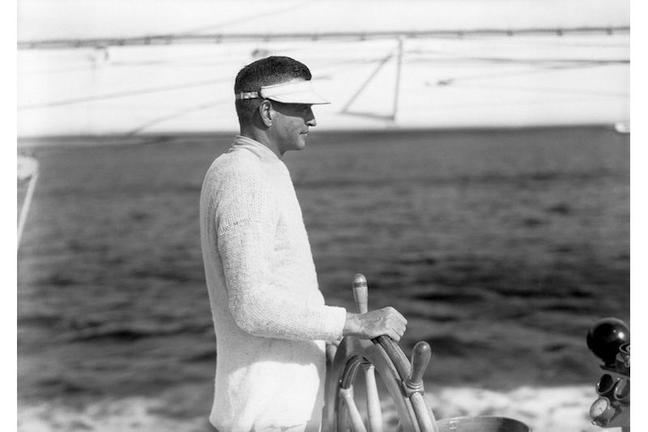
Harold Vanderbilt at the helm of his yacht, Rainbow, in 1934. Image: marinersmuseum.org
An era of American Dominance
The inheritor of a railroad empire, Harold Vanderbilt lived a life of great privelidge. As a boy, he sailed the world with his father, and by early adulthood, was an adept yachtsmen. He would helm Enterprise, Rainbow and Ranger turn, sailing each of them to victory, thus safeguarding America’s grip on the trophy. Ranger, with her riveted steel-plated hull, enjoyed particular success, winning 35 from 37 starts during her racing career. She easily saw off the British challenger Endeavour in 1937, winning all four America’s Cup races. The era of the J Class became a story of American dominance – one in of valiant but ultimately failed British challenges. In fact, America retained the America’s Cup trophy from 1870 right the way through to 1987, when they were finally dethroned by an Australian crew.
Decline and Fall
1937 marked the last America’s Cup race for 21 years, and with it the start of a steep decline for the J Class. Weetamoe was scrapped that very year, and others would soon be cannibalised for their steel during the coming war. As Europe slid towards conflict, the J Class faded away with the decadence of the 1930’s. By the 1980’s, only three of the 10 original J Class yachts remained – Shamrock V, Endeavour and Velsheda – two of which had lain derelict for decades. Now unrecognisable, they crouched in muddy inlets, the worn out husks of a golden era.
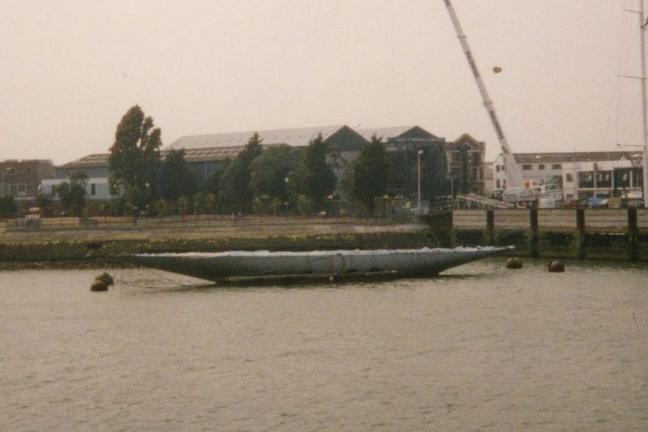
Velsheda in 1996. Image: Phil Wiston
Resurrection
In the 1990’s, salvation appeared in the form of Elizabeth Meyer, the founder of the International Yacht Restoration School. Meyer oversaw the comprehensive renovation and refitting of both Endeavour and Velsheda. She can, ultimately, be credited with saving these illustrious yachts from being consigned to the history books.
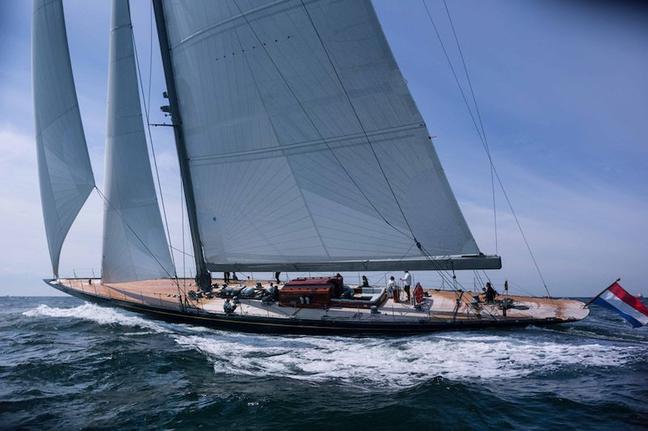
The recreated Rainbow. Image: yachtworld.co.uk
The creation of the J Class Association in 2000 further bolstered this revival, which has since shown no signs of abating. New yachts are now being faithful reconstructed from 1930’s designs; Vanderbilt’s Rainbow, the winner of the 1934 tussle with Sopwith’s Endeavour, was one of those recently recreated. In keeping with the original 1930’s yacht, the replica retains a mahogany interior with Art Deco detailing – making for a tasteful and true recreation that is almost identical to its forefather.
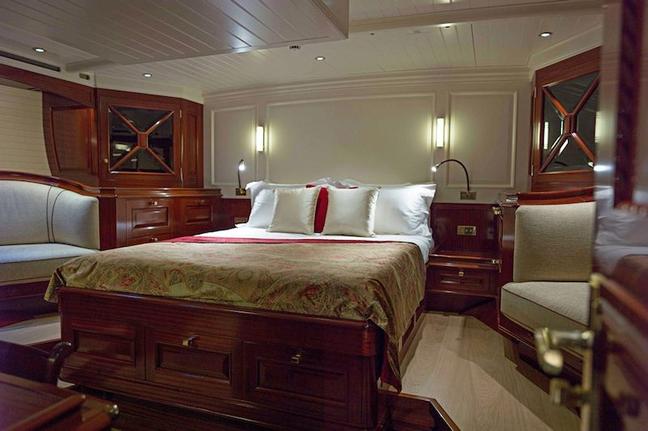
A wood-panelled bedroom aboard the new rainbow.Image: yachtworld.co.uk
Today, there are 8 J Class yachts in existence – just one short of the total number of original yachts built in the 1930’s. The 3 surviving British yachts have been supplemented by another 5 replicas in recent years, 3 of which have been launched since 2003. A brand new yacht, Svea, is set for completion some time next year, which will bring the total up to 9. If anything, this rejuvenation demonstrates the continuing pull of a yachting era characterised by drama and romance – a story of industry captains, 1930s glamour and cut-throat competition. That, and the fact that J Class yachts remain some of the most beautiful ever built.
Main image: Boat International, featured image Daniel Forster.

Become a Gentleman’s Journal Member?
Like the Gentleman’s Journal? Why not join the Clubhouse, a special kind of private club where members receive offers and experiences from hand-picked, premium brands. You will also receive invites to exclusive events, the quarterly print magazine delivered directly to your door and your own membership card.


